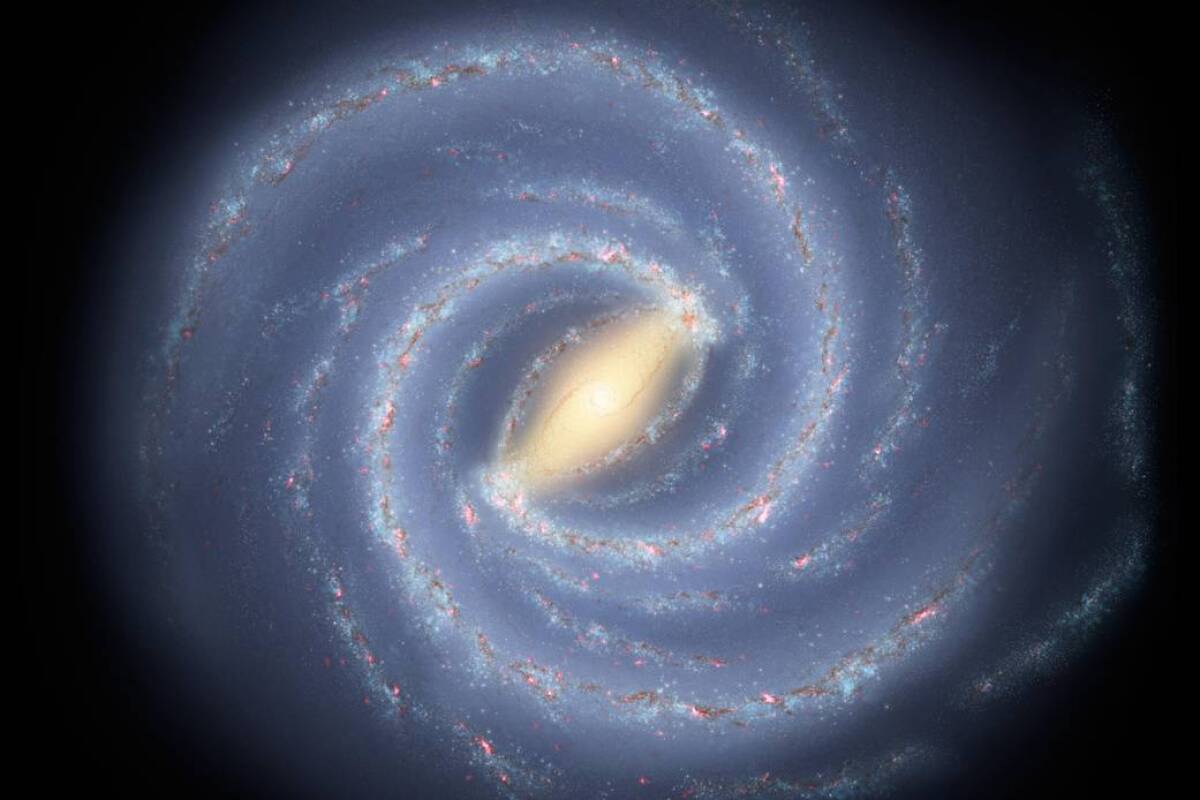
This is actually a challenge to our sizing regime. They are further away than we think or possibly behind some form of gravity lens. I do think that the Red Shift in particular is merely an indicator of far less particle content back in time.
We have accepted the Red Shift scaling assertion for far too long and it is now more surely wrong when we start detecting pink elephants.
Unless we are really reaching the limits of our experienced universe.
James Webb spots "impossibly massive" galaxies in the distant universe
February 22, 2023
An artist's impression of the Milky Way galaxy, which has a similar mass to newly discovered "impossible" galaxies in the early universe
The James Webb Space Telescope keeps challenging our best models of how the universe evolved, thanks to its incredible ability to see farther back in space and time than ever before. Now it’s discovered some “impossibly” gigantic galaxies that contain more mass than was thought to exist in the entire universe at that time.
Because the speed of light in a vacuum is constant, we watch objects in space on a time delay. The Sun is eight light-minutes away, so we’re seeing it as it existed eight minutes ago. The next closest star, Alpha Centauri, is about four light-years away, so our view of it is four years behind schedule.
If you extend that principle out into the deepest reaches of space, you can literally look back in time billions of years, getting a glimpse into how galaxies evolved over the lifetime of the universe. And with the unprecedented power of the James Webb Space Telescope, we can now see closer to the beginning of time than ever before, in clearer detail.
Perhaps unsurprisingly, this means we keep finding things that go against our current understanding of the early universe. A recent study of James Webb data revealed that barred spiral galaxies – those like our own Milky Way that have an advanced structure – existed billions of years earlier than thought possible.
Now, the telescope has spotted new sights that should be impossible, according to our current models. A team of astronomers, led by the Swinburne University of Technology in Australia, has observed six galaxies that are far more massive than was thought possible for their time. In fact, they have more mass than the entire universe was thought to contain at that point.
James Webb images of the six newly discovered massive galaxies
Swinburne University of Technology
“The six galaxies we found are more than 12 billion years old, only 500 to 700 million years after the Big Bang, reaching sizes up to 100 billion times the mass of our Sun,” said Ivo Labbé, lead researcher on the study. “This is too big to even exist within current models. This discovery could transform our understanding of how the earliest galaxies in our universe formed.”
The measurements still need to be followed up with further observations, to confirm the masses and where it’s all located. Alternative explanations are still possible, the team says, but these could still yield brand new discoveries themselves.
“One alternative, equally fascinating, is that some of the objects belong to a new class of emerging supermassive black holes, never seen before,” said Labbé.
Either way, it looks like our understanding of the universe will need some revision. The research was published in the journal Nature.
No comments:
Post a Comment